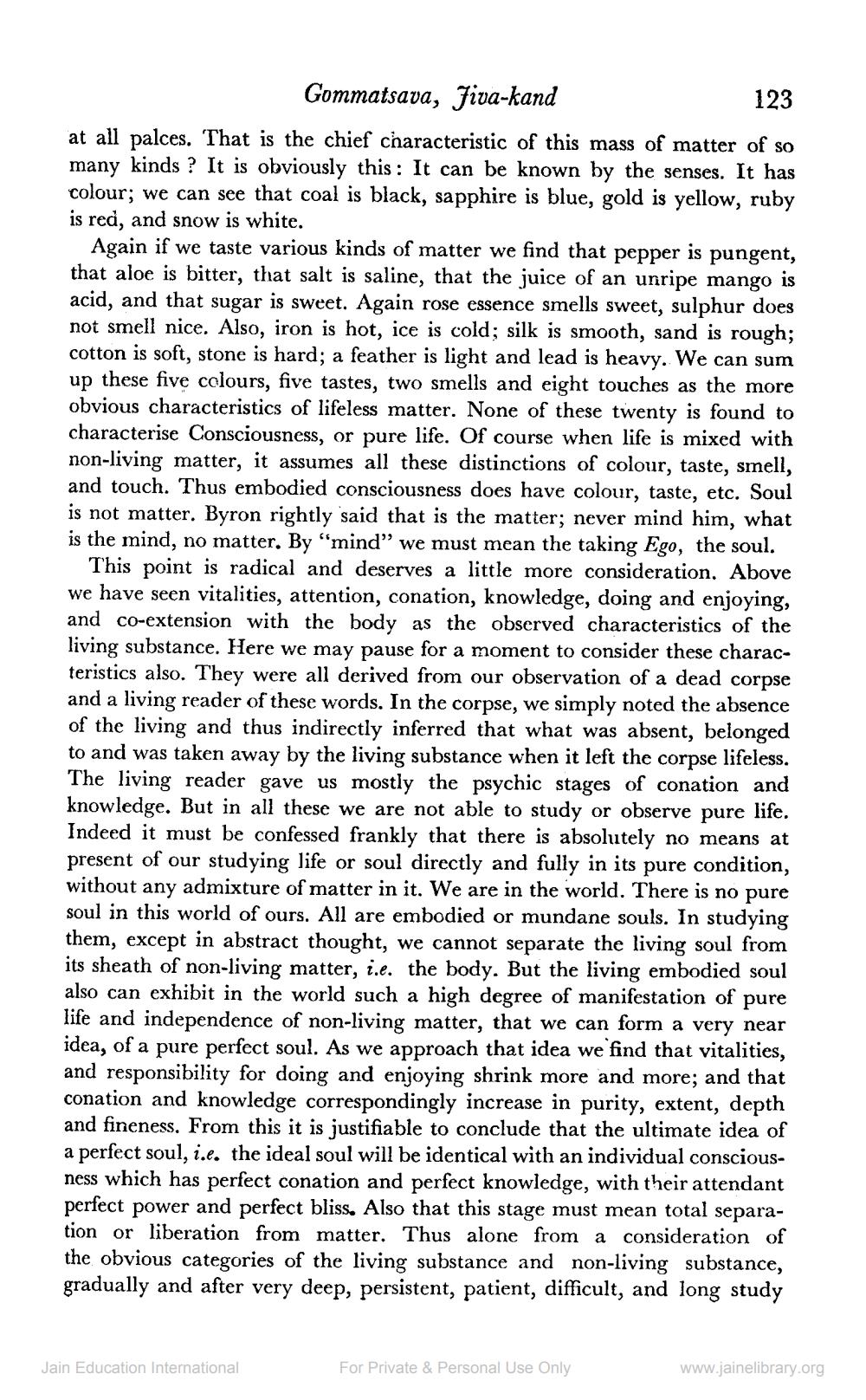________________
Gommatsava, Jiva-kand
123
at all palces. That is the chief characteristic of this mass of matter of so many kinds ? It is obviously this: It can be known by the senses. It has colour; we can see that coal is black, sapphire is blue, gold is yellow, ruby is red, and snow is white.
Again if we taste various kinds of matter we find that pepper is pungent, that aloe is bitter, that salt is saline, that the juice of an unripe mango is acid, and that sugar is sweet. Again rose essence smells sweet, sulphur does not smell nice. Also, iron is hot, ice is cold; silk is smooth, sand is rough; cotton is soft, stone is hard, a feather is light and lead is heavy. We can sum up these five colours, five tastes, two smells and eight touches as the more obvious characteristics of lifeless matter. None of these twenty is found to characterise Consciousness, or pure life. Of course when life is mixed with non-living matter, it assumes all these distinctions of colour, taste, smell, and touch. Thus embodied consciousness does have colour, taste, etc. Soul is not matter. Byron rightly said that is the matter; never mind him, what is the mind, no matter. By "mind” we must mean the taking Ego, the soul.
This point is radical and deserves a little more consideration. Above we have seen vitalities, attention, conation, knowledge, doing and enjoying, and co-extension with the body as the observed characteristics of the living substance. Here we may pause for a moment to consider these characteristics also. They were all derived from our observation of a dead corpse and a living reader of these words. In the corpse, we simply noted the absence of the living and thus indirectly inferred that what was absent, belonged to and was taken away by the living substance when it left the corpse lifeless. The living reader gave us mostly the psychic stages of conation and knowledge. But in all these we are not able to study or observe Indeed it must be confessed frankly that there is absolutely no means at present of our studying life or soul directly and fully in its pure condition, without any admixture of matter in it. We are in the world. There is no pure soul in this world of ours. All are embodied or mundane souls. In studying them, except in abstract thought, we cannot separate the living soul from its sheath of non-living matter, i.e. the body. But the living embodied soul also can exhibit in the world such a high degree of manifestation of pure life and independence of non-living matter, that we can form a very near idea, of a pure perfect soul. As we approach that idea we find that vitalities, and responsibility for doing and enjoying shrink more and more; and that conation and knowledge correspondingly increase in purity, extent, depth and fineness. From this it is justifiable to conclude that the ultimate idea of a perfect soul, i.e. the ideal soul will be identical with an individual consciousness which has perfect conation and perfect knowledge, with their attendant perfect power and perfect bliss. Also that this stage must mean total separation or liberation from matter. Thus alone from a consideration of the obvious categories of the living substance and non-living substance, gradually and after very deep, persistent, patient, difficult, and long study
Jain Education International
For Private & Personal Use Only
www.jainelibrary.org




